Collected and posted by Oconto County WIGenWeb Project
Collected and posted by BILL
This site is exclusively for the free access of individual researchers.
* No profit may be made by any person, business or organization through publication, reproduction, presentation or links
to this site.
Goldhorn School
Town of Brazeau
Oconto County, Wisconsin
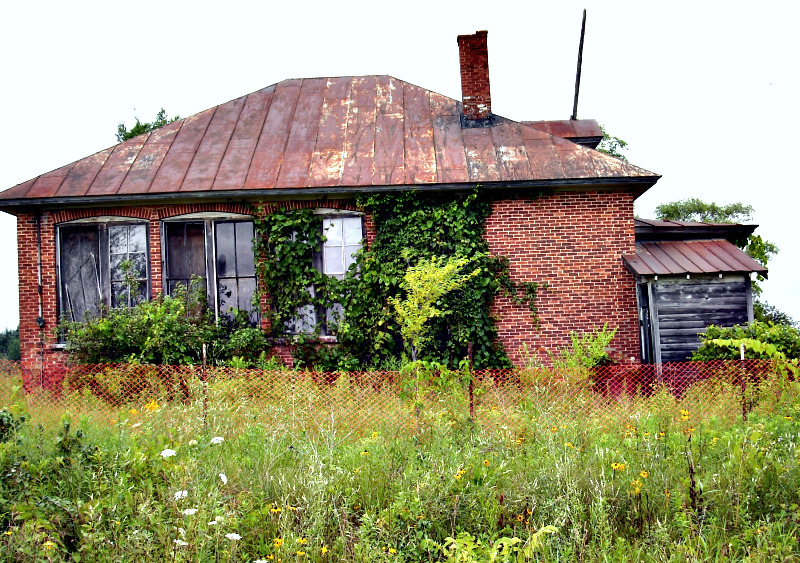
Taken 2010
Photo contributed by:
Jill Gondek
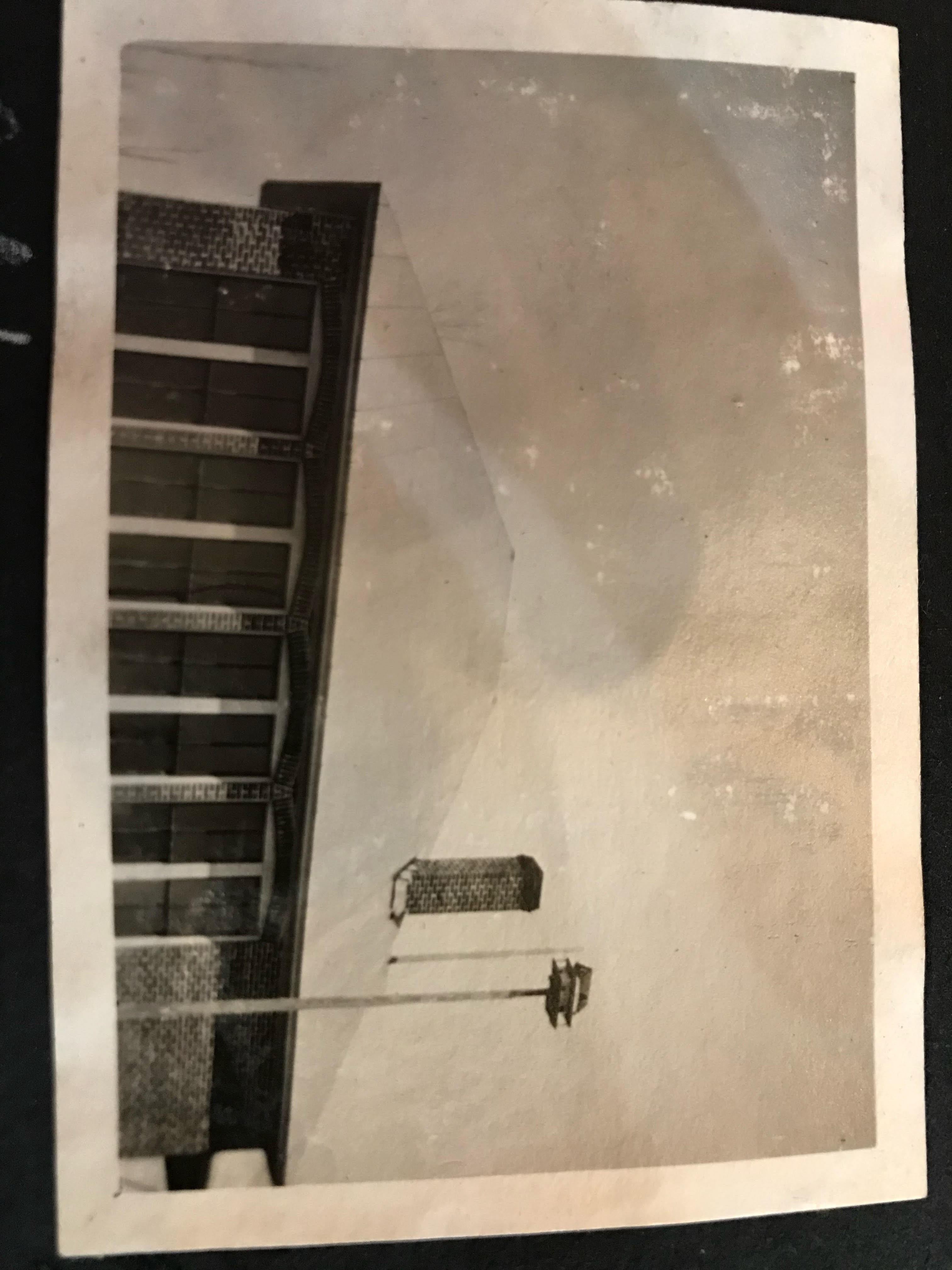 |
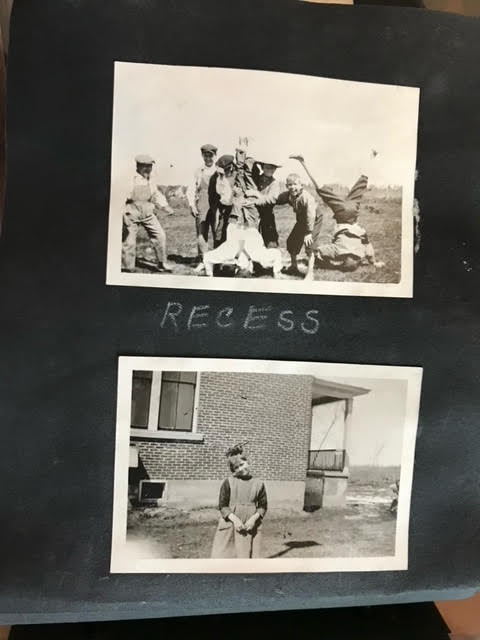 |
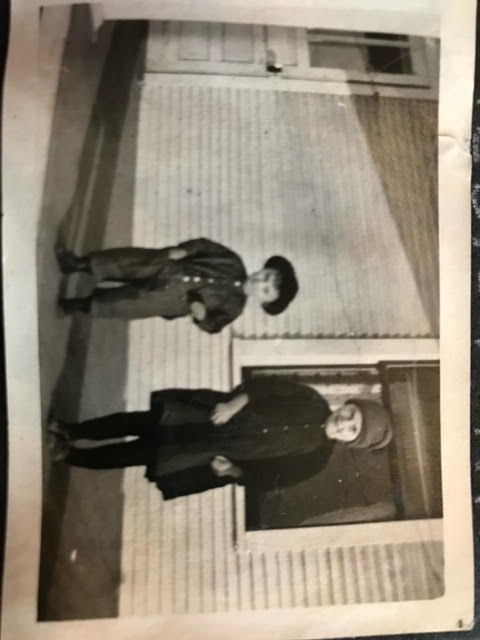 |
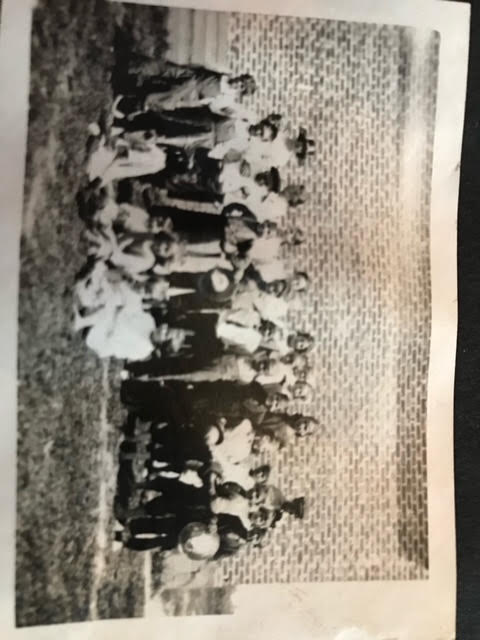 |
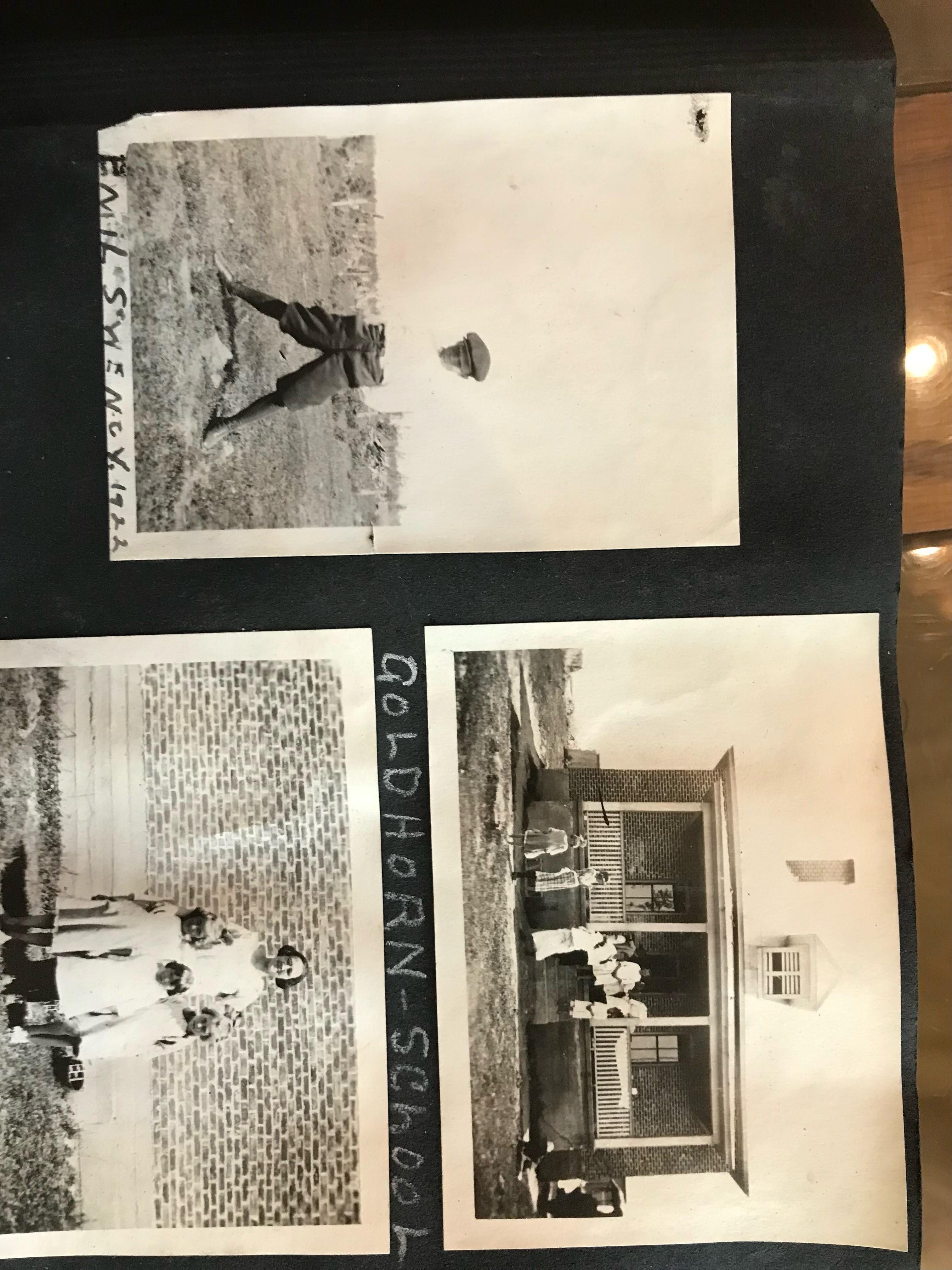 |
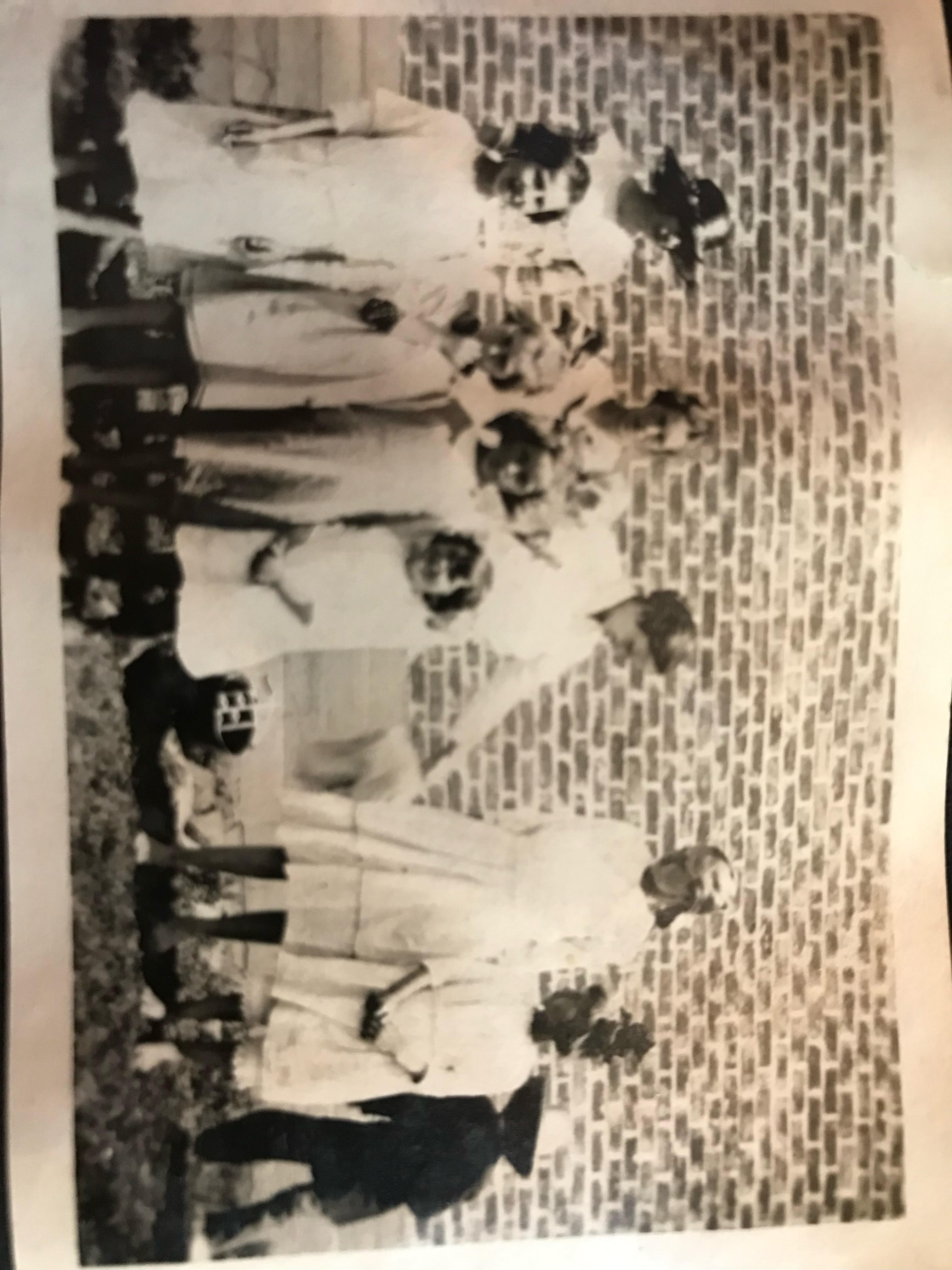 |
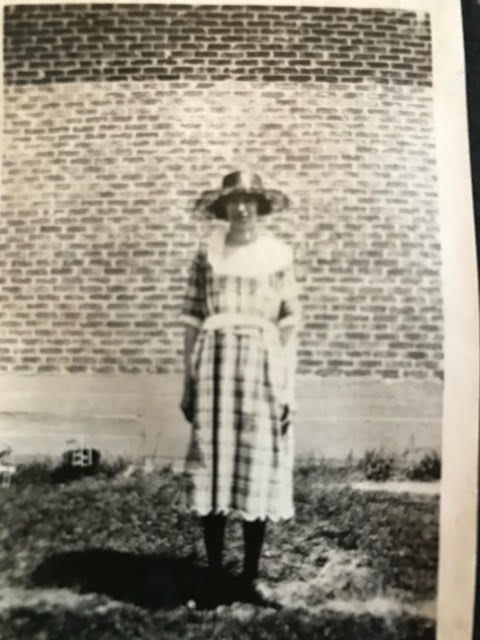 |
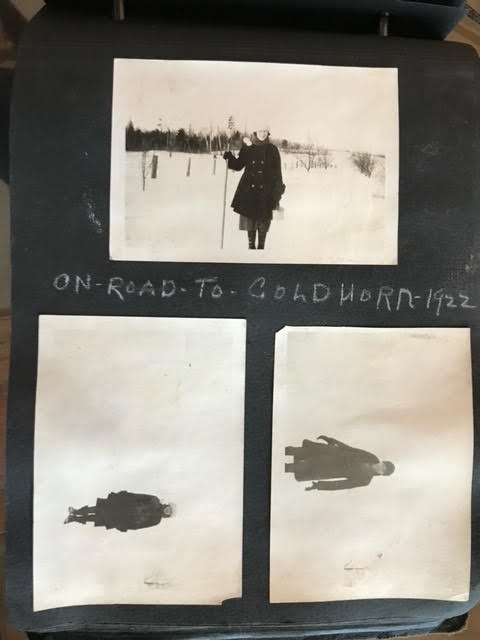 |
The pictures were donated by Randy Peterson , the grandson of Norma Dunst who was the Goldhorn teacher in 1921. For further info contact Randy Peterson |
Written by George E. Oleck
1991
Goldhorn School was estabished in the Spring of 1916. An acre of land was donated by Mr. & Mrs. Gust Swenty. Around 1961, Gust Swenty purchased the school and acre of land for $505.00.
The following information was provided by George E. Oleck for a class reunion held in 1991. This is a brief history of the Goldhorn Grade School, as gathered from old school records and from conversations with people with a clearer memory than mine. However, I included a few of my own personal reflections and I hope that these will jog the memories of many of the faculty and students, enabling us to expand upon this recording of the days gone by.
Reflection is good for the soul, and history is good for the future. Many thanks to Joyce Behling, Register of Deeds Oconto.County, and her staff, to Erlina Carlton, Historian at Coleman High School, to Pat Rudolph Rivet, and to Wilma Swenty Brosig. This article was researched and written by one of the five graduates of 1948, George E. Oleck.
The school was organized in the spring of 1916. No name was given to the school, only being identified as School District No.5. It was the last district in the area to be organized. New schools were established when the distance to the nearest existing one was either impractical or too costly, as determined by the number of students to be transported.
One acre of land was donated by Mr. and Mrs. Gust Swenty. A fence with a walk thru separated the school grounds from their house and farm buildings. Many of the teachers boarded there for the school year, others stayed at Lembke's, about three fourths of a mile south of the school.
According to the annual report of that organizing year, the clerk filing the report was listed as W. (Ward) Wiseman, with Fred Bednarz as director, and Albert Lembcke as treasurer. Their terms of office expired July 3, 1917, 1918, 1919, respectively. It is not clear as to how these officers were selected, perhaps by the straw vote. By law, it was the duty of the clerk to take the census of all children between the ages of four and twenty years old. The accuracy of these records were left to the mercy of the clerks own education and energy. Spelling of names was as best remembered or as "sounded like." Likewise, birthdays were not always accurate. For example, my own birth date was recorded by one year and two days off from 1939 until 1950.
At the ending of the first school year in 1917, Ray Schroth was listed as the treasurer. The teacher for that year was Ruth Flick, earning a salary of $45.00 per month. Teaching only 156 days that year, she earned a grand total of $360. There was no explanation for the 156 days as opposed to the normal 180. 1918 ended with the same board and teacher who earned a five dollar per month raise, which apparently influenced her to teach an additional twenty days. Not an eventful year. 1919, on the other hand, was more significant! This was the year that the school was named "GOLDHORN" As best that I could determine, the origin of that name came about thus: The neighboring school was "GOLDFIELD," and they were in existence for a few more years than Goldhorn. This gave them an occasion to call the kids at Goldhorn, "Greenhorns." The teacher took this as an opportunity to inspire her charges. "Let’s show them just how good we are and how bright we become. They will have to call us Goldhorns.
The officers remained the same, but there was a new teacher. Her name was Aileen Scott and her students must have truly shined for she was given a five dollar raise per month increase for her final four months. It must also be noted here that the school was closed for 24 days because of influenza. There were about 25 students this year as opposed to just fifteen when the school began in the fall of 1916.
It cost parents around two dollars a month to send their children to school, yet tuition for someone outside the district were charged only one dollar. The annual budget was only a few hundred dollars. For the year ending in 1920, the board remained unchanged, but the teacher did not. Her name was Margaret Gabriel, receiving $60.00 a month and taught 180 days.
A more generous board took charge in 1921 giving teacher Adeline Tommot $85.00 a month. The board consisted of: Clerk Ward Wiseman, Director. John Bieber, with Ray Schoth remaining as Treasurer. 1922 saw the same board, but again with a new teacher. Norma Dunst received the same salary as her predecessor, with tuition being raised to $1.07 per month. The board repeated in 1923, again with a new teacher, Erlinda Kohot. For some unexplained reason, she only taught 160 days. John Bieber replaced Ward Wiseman as clerk in 1924, with Pete DeFore as director and Albert Lembke as the treasurer. This is the same Albert Lembke who had the DC" located between the band k at the founding of the school.
When roads in the country were changed from numbers to names, Pete DeFore's name was put on a road a few miles from our farm on Old 64 and ran behind that part of the Peshtigo Brook Marsh west of the farm and came out onto the new highway just before the "Muck Farms." I did not notice any children in any census bearing that name. Apparently he logged off those ridges of their virgin pine before my grandfather got to them. His name on the road signs is spelled De Foure. Which one is correct, I do not know.
Teachers seemed to be difficult to hold in this 1924 year. Three of them were paid $85 a month, while they lasted. Agnes Presl taught for seventy days, Mrs. M. St. Mary for just two days, while Zola Statler lasted a whopping 106 days. Mrs. Gust Swenty was the clerk in the 1924-25 school year. With her were Gust Grosse as director, while Albert Lembke remained as treasurer. A salary of $90.00 per month was paid to teacher Ermina P. Davis. Tuition was now up to $1.85 per month. 1926 had Mrs. Gust Swenty remaining as clerk, John Rakowski as director, Albert Lembke still hanging in there as treasurer, and Mrs. Ward Wiseman was the new teacher.
It was a family affair in 1927. Ward Wiseman was elected clerk while his wife continued as the teacher. The other two board members remained. An interesting note was that four children were transported to the school. The report stated that one wagon was used at a cost of $141. The farthest distance was three and a half miles, that from the Louis Heisel farm. Adolph Montie held the clerks office in the 1927-28 term. Mrs. Ward Wiseman continued teaching, the other members remained.
This year the district paid tuition for nine children, paying $2.14 per month per child while charging $1.55 per month. My father got into the act in the 1928-29 school year. The clerk's report list Robbert Aleck, clerk. That's right, two b's. John Rackowski, director, John Swenty, treasurer. Dad had rather poor spelling. His own daughter Marion was Merion. Other examples are Wilmet, Lenert, Jenet, and Amil. Perhaps the new teacher, Lucille Wood will correct some of his spelling.
On the annual report it was noted that people with a physical defect were "cripples." There was a provision on the school census forms to enter names of children who were of age but not able to attend .school by reason of "defect." In gratitude, I must record here the name of one of the note worthy individuals, Edgar Heisel. Edgar attended a special school in Janesville, a school for the blind. His first love was music, and he became an accomplished entertainer. Many of the Christmas programs at Goldhorn were to the accompaniment of his piano playing. A belated thank you, Edgar for sharing that with us.
The year ending in 1930 brought no changes on the board or the teacher, nor an improvement in Pa's spelling. Now it was "Rockowski" and "Bettie" and "Dalla." In the spring of 1931, Robert Aleck was still the clerk, John Rockowski was director, and Mrs. Wm. Bieber as treasurer. The district spent $355.70 transporting 19 students, but the new teacher, Viola Cochenet was paid $85.00 a month.
The Great Depression was showing its effect. In 1932 Viola took another cut in pay down to $80.00 a month. Robert aleck was still clerk, Charley Patz was the new director, and Mrs. Ida Bieber was still the treasurer. One wagon was used to transport 18 students at a cost of $396.00. 1933 held no changes in personnel, with no other noteworthy items. 1934 was much the same except that I was born that February and Viola took another cut in pay. However, she could take some consolation in the fact that the law allowed a minimum of $75.00 per month.
In 1935 Henry Kralovetz became clerk, Charles Patz was still Director, while John Wendt took rein of the treasury. $147.20 was paid for transporting 18 kids, that three years ago cost $396.00. Viola Cochenet hung in there for $75.00 a month. Lanone Netzor was the teacher when the year ended in 1936. The board remained intact and no notations were found. Gust Grosse returned as Director after an absence of 12 years. The other two members remained with Lucille Elver as the teacher.
Some changes in the annual report forms were noted in 1938. The distance from school was eliminated and "wagons" was changed to "vehicles". Tuition was paid to other schools at a rate of 16t a week. Other work was perhaps hard to find because of the depression, we record the first male teacher, Wellsley Hodgins. The census for 1939 listed me as "Georgie" with my birth date two days and a year later than was correct. Also, the Kopitzke family was listed in the census. They lived four miles beyond us and a t mile beyond the road to Butler Rock. How would you like to hike that to school? Especially through that long swamp with all them "Wootz-Wootzes" they used to scare us with, lurking in those woods! There were two teachers that year, a Miss Ardis Schwartz and a Mrs. P. Geary. The board was the same as the previous year. We were beginning to come out of the depression in 1940, so Dorothea Keopsel was paid $85.00 a month, with the same board presiding.
No year could have been more trying for a school board and its teachers than 1941. World War II and Adolph Hitler were the two main items in our lives then. Not to be outdone, we had some boys in school I thought could have fought the war single handed. They were mighty rough on the teachers. Velma Goddard, the first of four teachers that year, lasted a mere 7 days. Mrs. Melchor, perhaps a little stronger, lasted 20 days. I can still hear the threats of the school board. "Shape up and mind the teacher or we will return to take you out to the woodshed for a lesson we would be apt to remember each time we sat down". This probably would explain why the next teacher, a Fern Williams lasted for 57 days. And she was a frail thing!
Then came John Janusz. He reminded me of those advertisements for Hastings Piston Rings. "Tough, But Oh So Gentle". He applied the toughness in his discipline and the gentleness in his teaching. I believe that some of the bigger boys did not return the following year upon learning that he was. At the time, all four teachers received $90.00 a month for their abuse. John Janusz returned with an increase to $100.00 per month in 1942. Ward Wiseman replaced Gust Grosse on the board, the only change there. Some of the tougher boys continued to challenge Mr. Janusz.
There was a heavy wet snow fall one particular day., After school, while he was taking down the flag, and we were beginning to walk home, my cousin, Leroy Swenty, threw a snow ball at him and 'hit the target'. After folding the flag and placing it on the pole support, Mr. Janusz, chased Leroy down, catching up to him near the Paul Borkowski farm. He simpiy gave Leroy a face washing of his life. After that there was no question of respect. Everyone knew who was in charge. Channeling our energies to useful things, we became true "GOLDHORNS"., While learning to appreciate art and poetry, he coached us into the champion softball team of a territory only limited by the distance we could travel in Dad's pickup truck.
In 1943, Mr. Janusz returned for 8 days and then was called into the service. I believe it was the Navy. Mrs. Brown taught the remainder of the year. Henry Kralovetz was clerk, Ward Wiseman was the director, with John Wendt continuing as treasurer. The census counted 70 children in the district in 1944. Of these, 42 were enrolled in school with an average daily attendance of 36. Out of this number, 4 boys and 2 girls graduated this year. Matt Valitchka began the year, then he left on sick leave. Josephine Koppline completed the year, along with the previous board.
A question in the annual report asked for the quantity of district owned vehicles. As I recall, we still had our car up on blocks for lack of gas stamps and tires. The year ending in 1945, had the same board, 38 students under the tutelage of Carl Melchor. Of these, 5 boys graduated and everyone's favorite, Teddy Gimbecki was recorded in the census. I suppose due to the war and a need for patriotism, these questions appeared in the annual report: Does your school have a U. S. flag? How many days was it flown in the school year just completed? Graduating in 1946 were 5 boys and 3 girls, and the same board held court. Two questions that caught my eye on the annual report were; Do you use sweeping compound? Do you have screens on windows and doors? The environmentalists were here way back then.
Evelyn Drengler began the school year and then John Janusz returned from the service. Evelyns pay was $160.00 per month, but the board was still in a grateful mood toward Mr. Janusz, so they paid him $190.00. My clearest memory of 1946 was having to go next door by Aunt Martha's to wake up Yvonne Grady to come and teach us. Another was of her fiancee, Wayne Walshlaeger, returning from the service and surprising her by walking into the class room. Had I been older, I would have been embarrassed by the way they carried on. Now of course, I would be most happy for them. And, for one more year the same board was in command.
The board changed for the year ending in 1948. The clerk was Robert Oleck, Henry Grosse was the director, and John Wendt, the treasurer. The teacher was Elizabeth Stromberg, with a whopping salary of $225.00 a month. Most important for me, I graduated with 4 others. Graduation was held in conjunction with all of the others from Oconto County. The ceremony was held in a theater in Gillett; and I almost didn't have a ride there. There were no graduates in 1949, with the same board and teacher with an increase to $240.00 per month. Of 68 children in the district, 36 were enrolled. My birth date was corrected in 1950. 5 girls graduated this year with the same board and teacher. In 1951, Marvin Wiseman took Henry Grosses place. Mrs. Stromberg got a $10.00 raise plus a $90.00 bonus for the year.
Paul Rudolph became the new clerk in 1952. 47 students were enrolled this year and 3 girls graduated. Beverly Swenty, a cousin of mine, was the new teacher. A new requirement was placed on the board. Persons reaching the age of majority had to be reported on a special sheet. This simply meant that anyone who became 21 years of age by the 25th of July of that year had reached the age of majority. I could not locate Chapter 96, Law of 1939, Par. (4) , subsect. # 1 of Sec. # 40.13 to find a reason for this law, but I expect it had to do with the legal age, etc., in any event, Leroy Hintz was listed on this first form.
In the year ending 1953 Beverly Swenty was still the teacher, but Ellinger was added to her last name. For this she was given a $10.00 a month raise? Alvin Patz became the new treasurer and the age of majority form contained the names of Eleanor Ermis, Earl Gusick, Beatrice Tachick and Kenneth Wardecke. Clerk Paul Rudolph, Director Fred Wardecke and Treasurer Alvin Patz ran things in 1954. Miss Elsie Colsom taught for 160 days, for $270.00 a month and Mrs. Irene Pelot the remaining 13 days at $300.00 per month. And I got married. 1955 held the same board, with Mrs. Wilma Valenta teaching for 107 days and Mrs. Karolyn Garrigan 73 days. When the school year ended in 1956, Helen K. Fosick was the teacher and the board remained the same as the year before. By now the operating budget had risen to $10,000.00 per year. This was one of perhaps many reasons that the board took the action that it did.
On June 25th, 1956, the Oconto and Marinette School Committees executed an order attaching all of the Goldhorn School District # 5, Town of Brazeau, to the Coleman High School Integrated District, Marinette County, Wi. This marks the end of the records of Goldhorn School, as far as Oconto County was concerned. Records after this point also contain items of a personal nature as regards individual students and therefore would be very difficult to obtain.
The following is from memories of students who attended after the consolidation. Teachers not mentioned before are: Mrs. Garrigan, Mrs. Julia Beaudoin, Mrs. Gissenas. I asked my sister Susan when they started bussing the kids to school, and she said "Why, Did you walk?". Anyway, Pat Rudolph Rivet mentioned that some of the drivers were: Julius Pusick and John Kobus. These were in the 50's, and in 60 and 61 Tresa and Albert Shevy. Now, I question these last two, and thought it might be "Schwittay" instead of " Shevy". I recalled people of that name living about 1/2 mile east of the school. Commy Brosig assured me that it was indeed "Shevy" because he remembers about his son Kenny and these two drivers not agreeing as to his behavior on occasion. He said that Wilma settled it by riding along one day with a stick. I am sure that one of the benefits of Consolidation as far as the kids were concerned was hot lunches. These were delivered to the school from Coleman by Ray McMonagle and Bill Camlek. Eating was always one of my favorite subjects. In fact, I got in hot water one day at Goldhorn for eating someone else's sandwich because I was still hungry after eating my lunch.
For the school years 1960-61, Johnny Wendt and Richard Rudolph were the last first graders to attend Goldhorn School. The two boys were bussed to neighboring White Potato Lake School for their second grade year.
Around 1961, two bids were submitted for the purchase of the 1 acre of land and the building. The buildings consisted of the school itself, the woodshed, and two "outhouses". I recall the one outhouse that the girls used had a knot removed on the back wall that was about eye high for the bigger boys. Of course, I don't believe that I was tall enough while I was there. The wood shed, now that was used in the spring months as a place to practice mountain climbing and other neat stuff, clambering over the left over wood which was by now full of termites and spiders. In the fall, it was full to the rafters with cuts of hard wood the size of which only the likes of a Paul Bunyan could carry.
This was used to fire the huge furnace that sat in the northwest corner of the building. In the winter, this furnace was lit after the first student and a teacher opened the door. Needless to say that we pledged allegiance to the flag and sang "Three Blind Mice" with our mackinaws on. The big cast iron heating element would sometimes reach the point of glowing red hot. During those troublesome years of the Second World War, this spot was used to frighten the teachers. Some of the bigger boys would fill empty 22 shells with the heads of "farmer matches", and place them on this hot spot. When they got hot enough, they would explode and fly around the room with a whistle. If those boys were to do this today, I am sure that they would be sent to a special school with vertical stripes and the windows made out of steel.
Getting back to the bids, one by Alvin Patz, the other by Gust Swenty. Gust Swenty's bid at $505.00 was accepted. It was only fitting that this came to pass, from donating to buying back. The uniqueness of a one room grade school is something that I shall always be grateful for.
After the pledge to the flag was made, there were songs to be sung. Songs like: John Brown's Body, My Bonnie Lies Over the Ocean, Swing Low, Sweet Chariot, Mine Eyes Have Seen the Glory, etc., after which individual classes would begin. Each class was called up to the "Recitation Bench", well within sight and sound of the remaining seven grades. Consequently, if you missed or failed to grasp something in the first grade, you had seven remaining years (at least), of exposure to it. I say at least because it was common for some to take longer than eight years to make it through.
Christmas time was always exciting. A stage was set up front, a cable stretched across the room, a curtain hung, and weeks of practice of a program to put on for the entire family. One particular year, a very good presentation of Charles Dickens "Christmas Carol" was given. Ghosts, chains, the whole nine yards. Of course another favorite time was the picnic at the end of the school year. All that food! Thus ended an era, and a saga in our lives that must not be forgotten. I wouldn't change it for all the Tea in China or any of the so called improvements that were supposedly there upon consolidation. I am truly grateful to the Almighty for allowing me to be a part of it. As Bob Hope put it, " Thanks for the Memories."
BACK TO THE OCONTO COUNTY SCHOOLS HOME PAGE